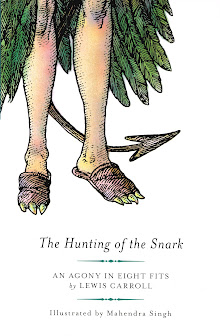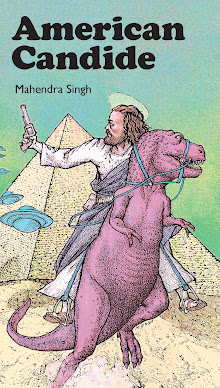
More aspersions casually flung at our beloved Bellman by an increasingly grumpy 3rd-person omniscient narrator who is better known around these parts as the Admirable Carroll.
This whole business of east and west is a mere bagatelle, unworthy of a poet bent upon the construction of a Snarkian Multiverse meant to rival the mightiest empires yet known to mankind.
As usual, that pukka Imperial sahib Rudyard Kipling put it best in his own verse:
Oh, East is East, and West is West, and never the twain shall meet …
Kipling obviously did not care for the Snark (he claimed that it made his throat hurt) and his dismissive attitude must itself be dismissed. This double dismissal will suffice for now, Kipling sahib, but we’ve got our eye on you … any more of these anti-Clochetic sentiments and we’ll send round a madly gyrating Assamese nautch girl to put you in your place, lest you forget!








Hi, I am writing an essay on Kipling and Carroll and I wonder whether you remember where you read about Kipling not caring for the Snark?
ReplyDeleteHello, Ella. I do not remember where I read about Kipling disliking the Snark and it may well be that I made the whole thing up as an elaborate joke upon Kipling's current reputation as an imperialist and the British Raj setting I introduced in a later section of my Snark version, Fit the Seventh, where the Banker (Karl Marx) meets his doom in an Old Delhi bazaar.
ReplyDeleteYour essay sounds very interesting to me, I love Kipling! His verse is often quite good and his "Kim" is one of the great British adventure novels of all time, right up there with Nostromo.
So, to sum up, I think it's all a case of artistic license gone mad … thanks for reading the blog and feel free to chime in with questions and comments. Best of luck with your studies and BTW, what's the thesis of your essay?
Its about the child muse. Its mostly about the 'Just So Stories' and how they were written for and about Josephine Kipling, who died at the age of six and was Kipling's collaborator and critic during their genesis, but after her death she appears in many forms within the stories, as characters, shaping plotlines, in the framing poems and the illustrations. And there are of course fascinating crossovers between Josephine and Alice Liddell (and also Barrie's Llewelyn Davies boys), where for perhaps the first time the the child muse, the child protagonist and the child audience morph into one and the same thing. Anyway the reason I asked this question in the first place is that in Kipling's 'How the Whale Got His Throat' it reads, 'if you swim to latitude Fifty North, longitude Forty West (that is Magic) you will find, sitting on a raft, in the middle of the sea, with nothing on but a pair of blue canvas breeches, a pair of suspenders (you must not forget the suspenders, Best Beloved) and a jack jknife, one ship-wrecked Mariner, who, it is only fair to tell you, is a man of infinite resource-and-sagacity'. Anyway, the latitude longitude thing instantly reminded me of the 'Snark', particularly that wonderful map, so I wondered whether it might be a reference to Carroll's work! What do you reckon?
DeleteOh and by the way, I'm curious, what do you think of Kipling's illustrations (and detailed explanations alongside) of the Just So Stories? Are you familiar with them?
ReplyDeleteI think you have quite an interesting and valid thesis, Ella. And that passage from the JSS, you are right, there is a bit of a Bellmannish air to it. I have always found those illustrations very interesting … they have a naive charm to them and sometimes Kipling came up with some really eye-catching solutions. They are very classically British in flavour, the visual feel is dry, one might say, but full of personality.
ReplyDeleteThe multiple roles of the child you are exploring, combined with the underlying theme of death and loss, or at least, impending adulthood, it's a elegaic thesis.